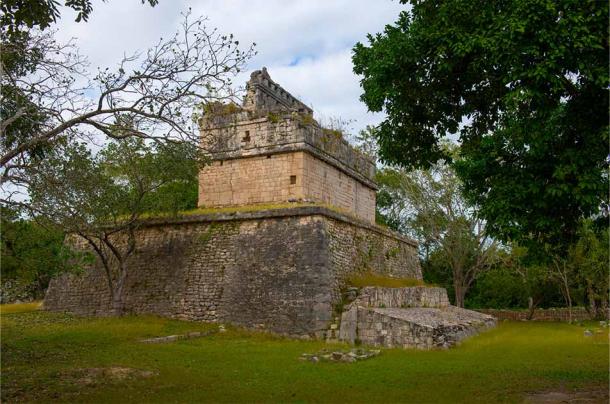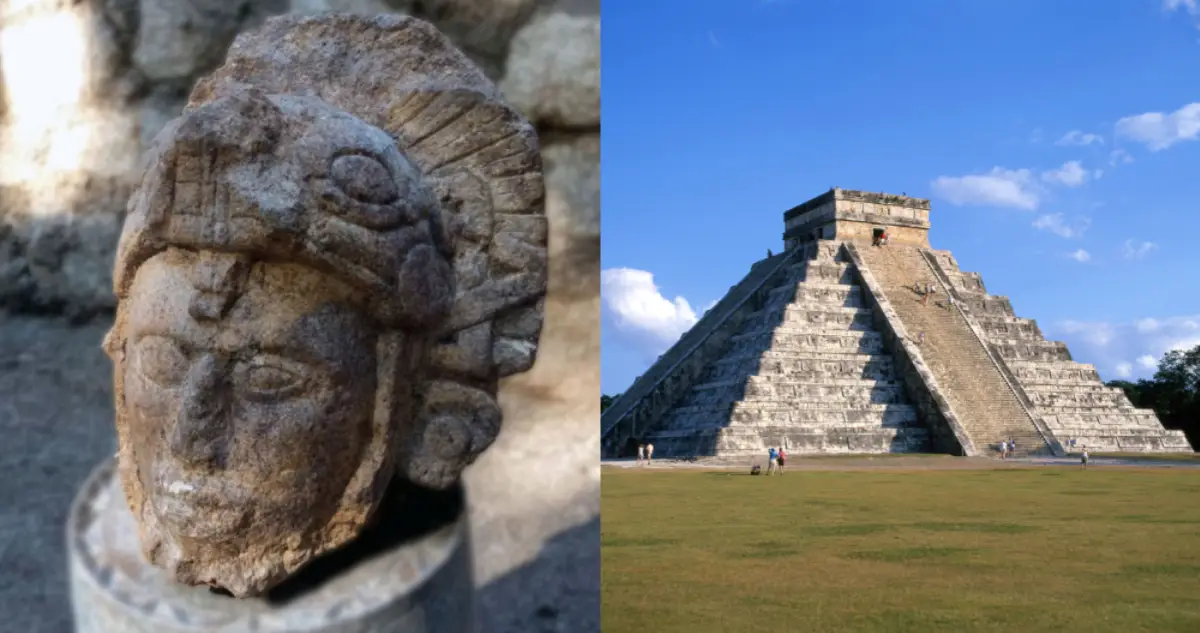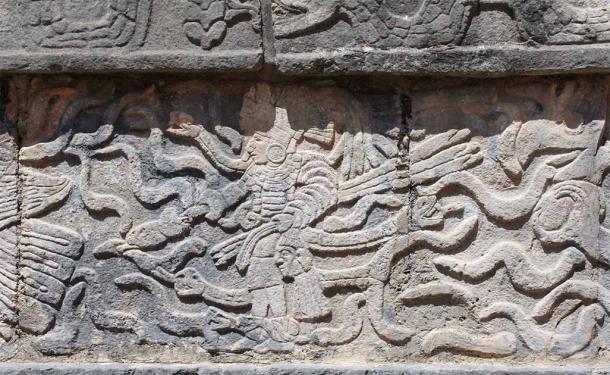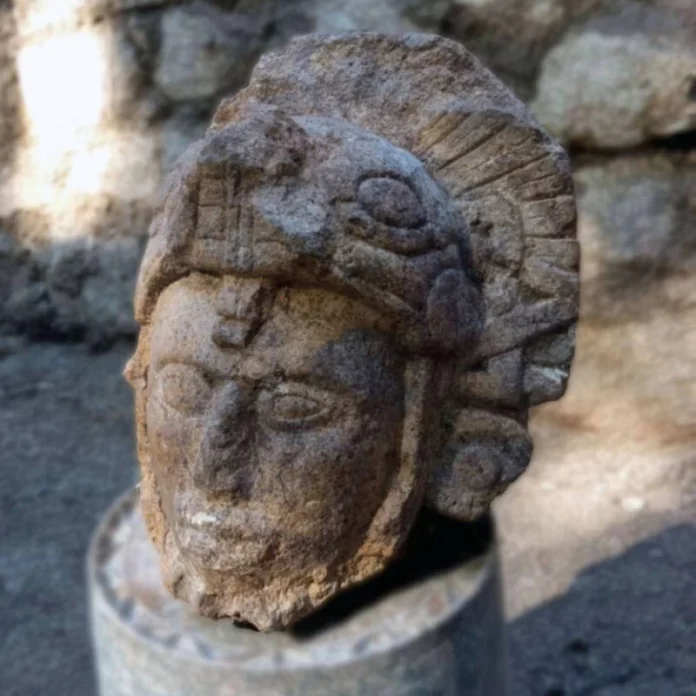In the heart of Mexico’s Yucatan peninsula, the ancient Maya city of Chichen Itza continues to yield remarkable archaeological treasures, shedding new light on the rich cultural heritage of this remarkable civilization. Recently, archaeologists working at the site’s Casa Colorada Complex have made an extraordinary discovery – the sculpted head of a Maya warrior adorned with a stunning feathered headdress and a serpent helmet.
The Sculpted Maya Serpent Warrior

Excavations carried out by Mexico’s National Institute of Anthropology and History (INAH) within the Chichanchob, also known as the Casa Colorada Complex, have uncovered a remarkable find. Situated near the ancient observatory known as El Caracol, the team discovered a rectangular platform and temple in the Puuc architectural style. Inside this structure, they found a chamber adorned with intricate carved hieroglyphs that depict the lineage of Chichen Itza’s rulers, as well as the history of the nearby kingdom of Ek Balam.
The most extraordinary discovery, however, was the sculpted head of a Maya warrior. Measuring approximately 33 centimeters (13 inches) in height and 28 centimeters (11 inches) in width, this rare artifact dates back to the Late Classic period. The warrior’s face is depicted wearing a feather headdress, and a serpent helmet surrounds his head with its wide-open jaws.
The Significance of Serpent Warriors in Maya Culture

Chichen Itza, at the height of its power during the Late Classic and early Terminal Classic periods, was a sprawling trading hub that covered an area of around 10.36 square kilometers (4 square miles) and supported a population of up to 35,000 residents. The city’s prominence was closely tied to the Maya’s reverence for serpent symbolism, which held profound spiritual and cosmological significance.
In Maya culture, serpent warriors played a vital role in religious ceremonies, adorning themselves with elaborate serpent-themed attire to serve as intermediaries between the earthly and supernatural realms. These warriors were particularly associated with rituals related to fertility, rain, and the cyclical nature of existence. The intricate craftsmanship of their costumes, including the feathered headdresses and serpent helmets, reflected the Maya’s deep connection between nature and spirituality.
Deciphering the Symbolism

The serpent’s symbolic importance in Maya culture was multifaceted, representing concepts such as renewal, transformation, and cosmic energy. The shedding of a serpent’s skin was seen as a metaphor for rebirth and regeneration, aligning with the Maya’s understanding of agricultural cycles and the cyclical nature of the natural world.
Moreover, serpents were also associated with deities related to water, fertility, and rain, as the Maya believed these supernatural entities played a crucial role in sustaining life and ensuring agricultural abundance. It is possible that the feathered serpent helmet discovered at Chichen Itza may have represented the prominent Maya deity Kukulcán, who was revered for his wisdom, knowledge, and the dualities of creation and destruction.
Conclusion
The discovery of this remarkable sculpted Maya warrior, adorned with a feathered headdress and a serpent helmet, provides a tantalizing glimpse into the rich cultural and spiritual traditions of the ancient Maya civilization. This artifact, unearthed at the renowned site of Chichen Itza, serves as a testament to the Maya’s exceptional craftsmanship, their profound connection to the natural world, and the enduring legacy of their sophisticated belief systems. As archaeologists continue to explore the secrets of Chichen Itza, we can expect more remarkable discoveries that will further our understanding of this captivating ancient culture.
